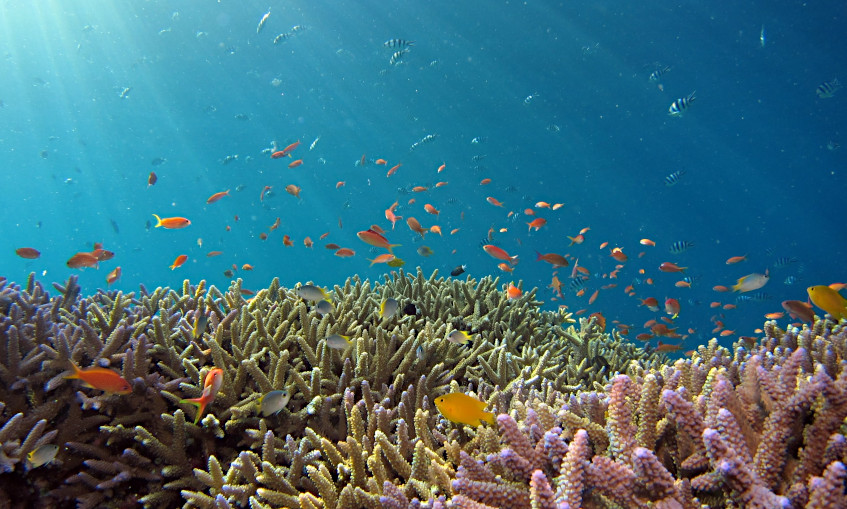Biodiversity

Biodiversity – The basis of life on Earth as we know it
Biodiversity
The Anthropocene is characterised by unprecedented changes to the environment caused by human actions that affect ecosystems and the natural world. Anthropogenic drivers severely accelerate climate change and biodiversity loss, such that scientists have identified the massive decline of biological diversity as a major cause for concern in the 21st century. Their warnings should not be taken lightly since biodiversity – the biological variety of all living species on Earth – provides the basis of life as we know it. Diversity of plants and insects ensures our global food supply, marine biodiversity keeps oceanic ecosystems stable and healthy, just as species variety of land-dwelling animals and plants in grasslands, forests, wetlands and other habitats maintains these diverse ecosystems by keeping them in balance.
Biodiversity is key to all the wonders of planet Earth and, yet, it has become increasingly threatened since humans have entered the stage. Recognising this threat, nations worldwide responded by founding initiatives to focus their efforts on monitoring and protecting global biodiversity, such as the Convention on Biological Diversity (CBD, 1993) and the IPBES (Intergovernmental Science-Policy Platform on Biodiversity and Ecosystem Services) established in 2012. The IPBES publishes regular assessment reports on the biodiversity crisis in different parts of the world. Most recently, the UN’s Sustainable Development Goals (SDGs) clearly articulated the need to protect and sustain biodiversity, especially Goals 14 and 15 that centre on ‘Life Below Water’ and ‘Life On Land’. These calls for action testify to the “anthropogenic biodiversity crisis” (Rull, 2022) that we are currently witnessing due to global warming, habitat loss, overexploitation and several other interlinked factors. Rates of biodiversity loss far exceed the threshold of a 'safe operating space for humanity' as originally proposed in Rockström et al's Planetary Boundary model (2009). Refined since then in attempts to specify how genetic and functional diversity contribute to ‘biosphere integrity’ (Steffen et al, 2015; Mace et al, 2014), the model highlights the vital importance of biodiversity from an Earth System perspective.
With more than 40.000 species threatened with extinction according to the IUCN Red List, the current biodiversity crisis has been likened to the five documented mass extinctions in Earth’s history which occurred over the last 540 million years. Scientists, policy makers and journalists who refer to anthropogenic biodiversity loss as the “sixth (mass) extinction” acknowledge that it is enormous in scale and might result in the annihilation of more than 75 percent of all species on the planet. Latest research findings indeed confirm that the continuing decline of biodiversity across the world has set the Earth on a “sad trajectory towards a Sixth Mass Extinction” (Cowie, Bouchet & Fontaine, 2022). All is not yet lost, however, and examples of successful conservation projects and reintroductions of species give reasons for hope. It remains to be seen if deliberate human action taken against the unintended ecological consequences of human interference may still reverse the world’s worrying course towards extinction and planetary crisis.
— Eva Spiegelhofer
Researchers: Thilo Hofmann, Alice Vadrot, Verena Winiwarter
Further Reading
- Ceballos, G. and Ehrlich, P. R. (2018) The misunderstood sixth mass extinction. Science 360 (6393).
- Cowie, R. H., Bouchet, P. and Fontaine, B. (2022) The Sixth Mass Extinction: fact, fiction or speculation? Biological Reviews, no pages.
- Johnson, C. N., Balmford, A., Brook, B. W. et al. (2017) Biodiversity losses and conservation responses in the Anthropocene. Science 356: 270–275.
- Mace, G. M., Reyers, B., Alkemade, R. et al. (2014) Approaches to defining a planetary boundary for biodiversity. Global Environmental Change 28: 289-297.
- Rockström, J., Steffen, W., Noone, K. et al. (2009) Planetary Boundaries: Exploring the Safe Operating Space for Humanity. Ecology and Society 14(2): 32.
- Rull, V. (2022) Biodiversity crisis or sixth mass extinction? EMBO Reports 23: e54193.
- Steffen, W., Richardson, K., Rockström, J. et al. (2015) Planetary boundaries: Guiding human development on a changing planet. Science 347(6223): no pages.
